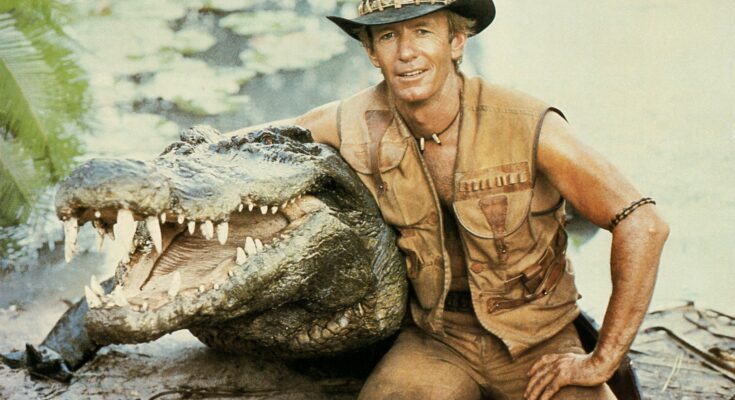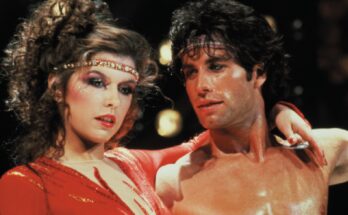Crocodile Dundee (1986)
Crocodile Dundee (1986), directed by Peter Faiman, is an Australian-American adventure comedy that became an international hit and a cultural icon of the 1980s. Starring Paul Hogan as the charming and rugged bushman Michael “Crocodile” Dundee, and Linda Kozlowski as American journalist Sue Charlton, the film blends humor, romance, and fish-out-of-water storytelling to showcase the contrast between the untamed Australian outback and the bustling modern life of New York City.
The story begins when Sue Charlton, a confident reporter for a New York newspaper, travels to the Northern Territory of Australia to cover a story about a man who reportedly survived a crocodile attack. She meets Michael J. “Crocodile” Dundee, a rough-around-the-edges but good-natured bushman who runs a small safari business in the outback town of Walkabout Creek.

Dundee, with his trademark hat, knife, and carefree charm, takes Sue deep into the wilderness to show her where the attack happened. Along the way, she witnesses his extraordinary survival skills — navigating treacherous terrain, fending off wild animals, and living harmoniously with nature. When Sue is nearly attacked by a crocodile, Dundee saves her life, earning both her admiration and affection.
Despite his ruggedness, Dundee proves to be surprisingly kind-hearted, witty, and full of wisdom about life and people. His deep connection to the land, knowledge of Aboriginal culture, and humor make him a fascinating figure to Sue. After their journey, she invites him to visit New York City, wanting to introduce him to her world and share his story with her readers.

In New York, the tables turn. The once-confident bushman becomes the outsider, confronting modern city life for the first time. Dundee’s innocent misunderstandings of urban customs lead to a series of comedic moments — from trying to drink from a bidet to reacting to street muggers with his now-famous line: “That’s not a knife… that’s a knife!”
As Dundee explores the city, he quickly wins over everyone with his honesty, charisma, and down-to-earth attitude. Despite his unfamiliarity with modern technology and social norms, he adapts with humor and courage, showing that his bush instincts can apply even in a concrete jungle.
Meanwhile, romance blossoms between Dundee and Sue, but their relationship becomes complicated when Sue’s wealthy boyfriend and editor tries to interfere. Dundee, feeling out of place in this sophisticated world, decides to return to Australia. However, in a touching finale, Sue realizes she loves him and rushes to find him at a crowded subway station. Unable to reach him through the packed crowd, she shouts her feelings across the platform, and Dundee responds with a joyful climb over the people to reach her — a symbolic act of bridging their two worlds.
Crocodile Dundee ends with the couple reunited, leaving audiences with warmth and laughter.
The film’s success came from its universal themes — simplicity, kindness, and adventure — combined with Paul Hogan’s magnetic performance. It not only introduced the Australian outback to the world but also became a timeless feel-good classic about love, culture, and staying true to oneself.



